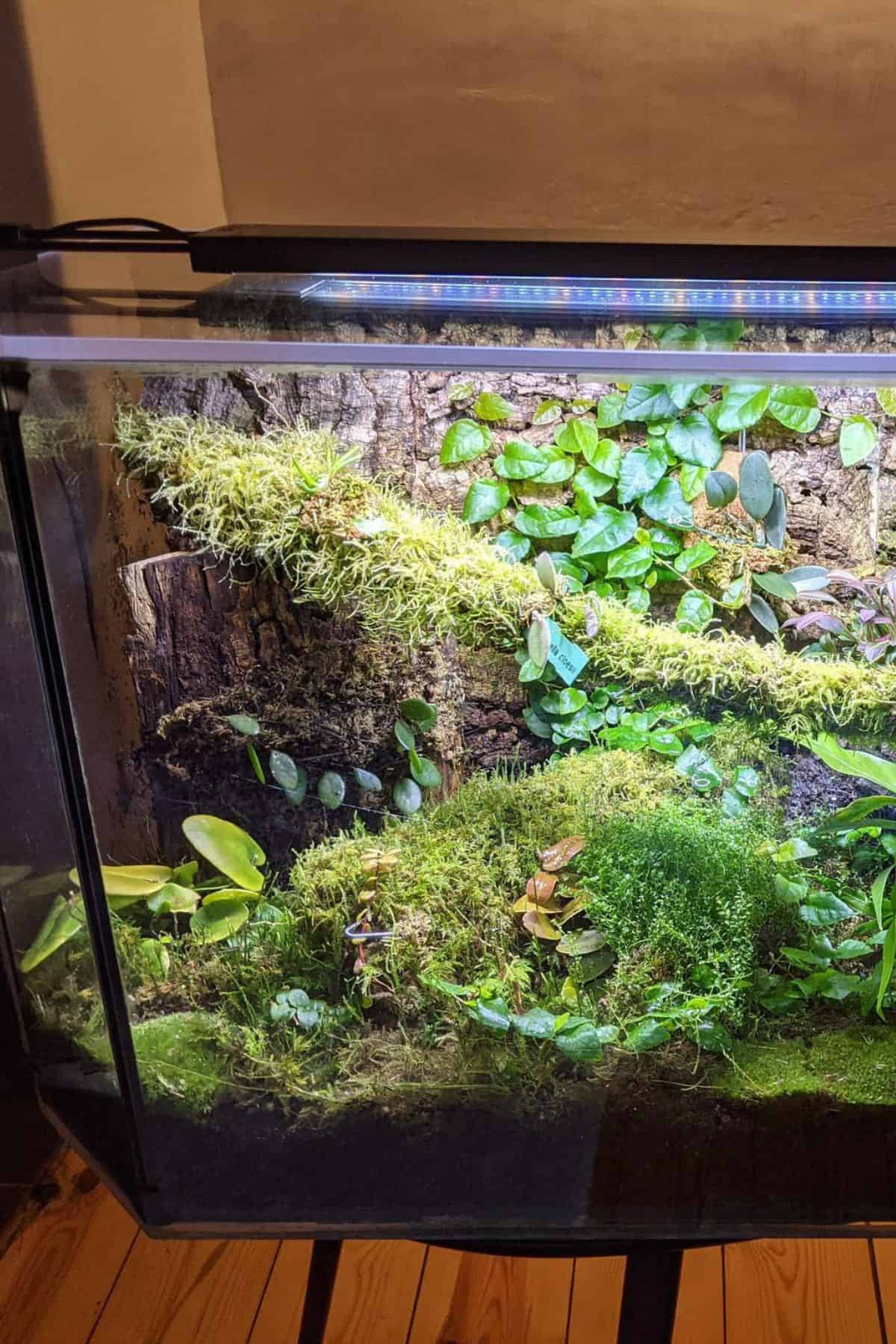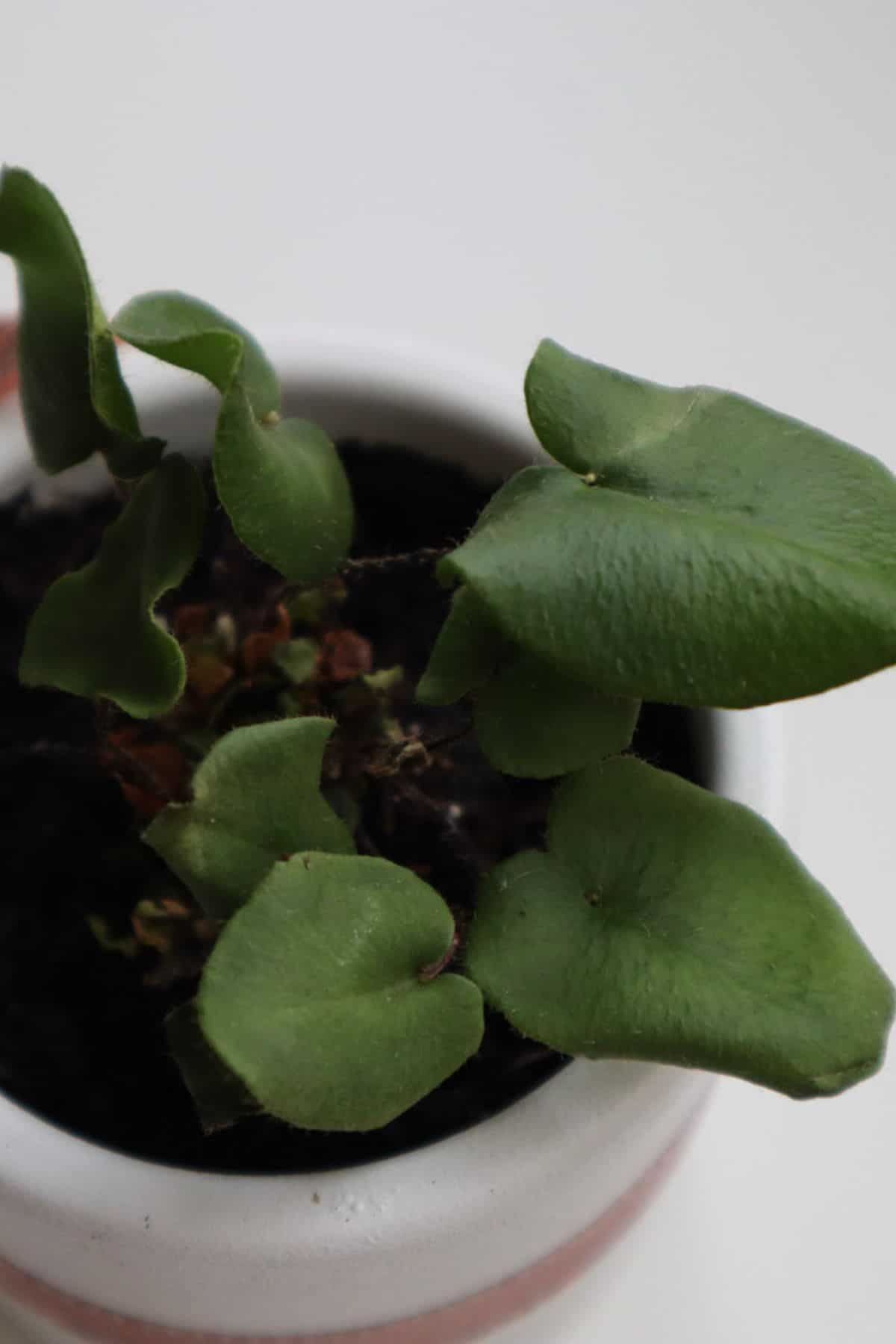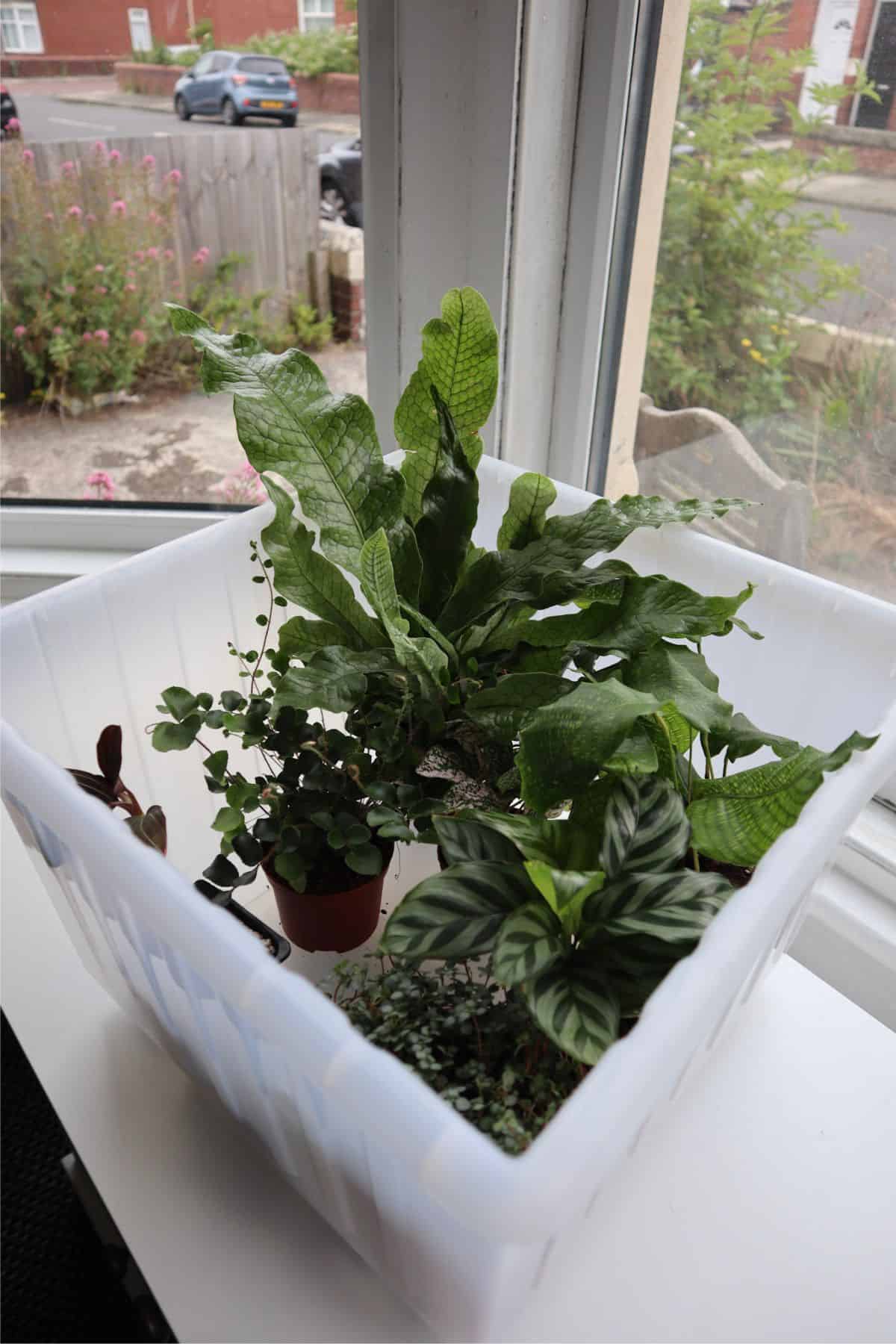Hemionitis arifolia is truly one for the romantics.
Its deep green leaves are perfectly heart-shaped, earning it the name “Heart Leaf Fern.”
It boldly stands out from the rest of the fern community, with fuzzy black petioles contrasting the sweet, delicate hearts.
This plant thrives in terrarium settings due to its love of moisture and high humidity.
And only growing to heights of 6-10 inches tall, it makes a wonderful centerpiece in any plant shelf or terrarium.

Where to Buy Heart Fern
See the links below to purchase from reputable terrarium plant shops and marketplaces (may include affiliate links).
Heart Fern Care Essentials
| Plant Type | Fern |
| Lighting | Bright, indirect light |
| Temperature | 60-85°F (15-30°C) |
| Watering | Regular, even moisture |
| Humidity | High humidity (60-90%) |
| Growth | 6-10 inches |
Lighting
The Heart Leaf Fern is an epiphytic plant, meaning it attaches to and grows from other organisms – namely in the nooks and crannies of host trees.
Because of this, it stays beneath the thick canopy and rarely sees direct sunlight.

This makes bright, indirect light the ideal light situation. If available, a North or East-facing windowsill is ideal.
I keep all my ferns and terrariums on a shelf several feet away from a South-facing windowsill. They get around 200 foot-candles there during winter, which is on the low side, but they’re still doing well.
Grow lights are an ideal addition if you can’t provide enough light.

Watering
Despite its unique (and adorable) leaf shape, this plant is a typical fern. It loves nothing more than consistent, even moisture.
If you’re keeping yours as a houseplant, regularly test the topsoil with your finger to check if it needs a drink.
It won’t tolerate being sat in soggy water, though. In nature, epiphytic ferns are regularly soaked, but any excess water rolls off, so they’re never sat in pooled water.
Having proper drainage will help mimic nature and prevent root rot.

If you’re putting your plant in a terrarium, a drainage layer of leca and mesh will help buffer any overwatering.
Substrate & Soil
As we now know, Hemionitis arifolia is an epiphytic fern, so you’d be forgiven for thinking that it wouldn’t be picky with where it grows.
But epiphytes are quite the opposite; they don’t typically grow terrestrially, so substrate choice is critical. Dense, compact potting soil would spell disaster.
It really needs a well-draining, chunky substrate that allows for airflow around the roots.
I recommend our tropical soil mix for this. It has a water-retentive coco coir base, earthworm castings for nutrition, and plenty of orchid bark to boost aeration and drainage.
Temperature & Humidity
Native to Southeast Asia, Heart Ferns love warm, high-humidity environments.
Personally, I’ve had major issues keeping this plant in a room with too low humidity. It’s crisped, curled up, dried out, and even perished.

It needs a tropical environment to thrive, so if you can’t give it a minimum of 60% humidity in the home, I highly recommend popping it in a terrarium.

While they can withstand lower temperatures during the cold season, any temperature drop below 60°F is unlikely to end well.
Growth
Luckily for us, the Heart Leaf Fern will stay a relatively dainty size, never getting too big.
Each new leaf (or, if we’re being technical, frond) will originate from the rhizome, sprouting out from the base of the plant.
As it matures, the fuzzy petioles may grow taller than on the previous leaves, but you can always snip them back if they grow too large for your space.

Propagation
In nature, Heart Ferns spread primarily through spores, but division is by far the easiest way to propagate this plant in the home.
And it’s not as scary as it might seem!
Once you have a dense, healthy fern, gently tap it out of the pot. Then, stick your thumbs in the middle of the root ball and start to tease it two.

If you need to, grab a pair of scissors to snip through any stubborn roots, rhizomes, or fronds until you have not one but two plants sitting before you.
You will likely lose a frond or two in the process, but it’s a necessary evil, and as long as you have enough roots in each plant, it will bounce back.

Varieties & Similar Plants
The romantic shape of the Heart Leaf Fern isn’t particularly hard to find elsewhere (you need only look to the Philodendron genus), but it’s certainly not common in the fern world.

There aren’t any other notable members of the Hemionitis family either.
But if you’re looking for small terrarium-ready ferns, there are plenty of other interesting leaf shapes, colors, and forms to experiment with.
Common Problems
This plant isn’t all sunshine and rainbows; it’s also especially prone to pest infestations, including scale, mealybugs, and aphids.
If there are pests in the area, you can bet they will find your Heart Leaf Fern.
So make sure you quarantine any new plants for a few weeks (the bathtub is ideal) before allowing them into the rest of the home or a terrarium.
Honestly, there’s nothing worse than your whole beloved collection being taken down by a newcomer; we lost half of our plants to a thrip infestation once, and it was awful.

If you do have an infestation, a neem oil treatment is a decent organic option, but it doesn’t work every time.
